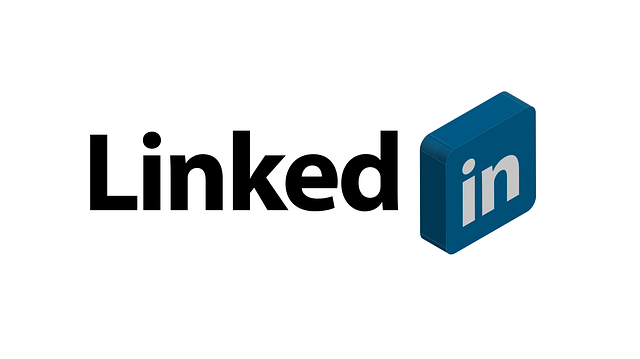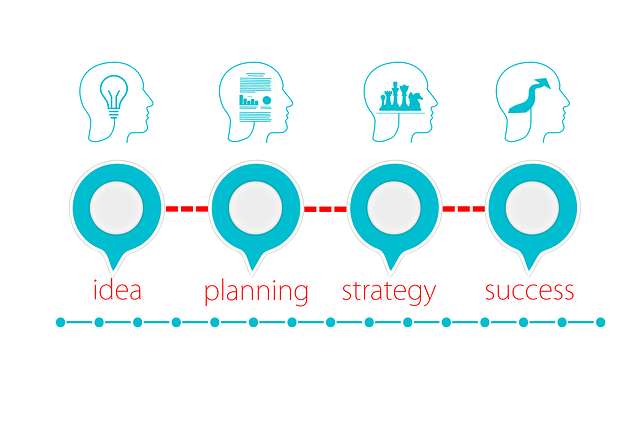What is Word of Mouth Marketing?
Word of Mouth Marketing seems like a pretty obvious one, but it is absolutely crucial to your business. It’s when your customer’s interest in your products or services is spoken about in their daily lives. In simple terms, it is free advertising generated by the experiences that your customers have with your business. This can be anything from a great customer service experience, where you have gone the ‘extra mile’ to help them with a problem, or maybe solved a problem they didn’t realise they had. Something extraordinary, or just a product or service that they are really pleased with and want to tell their friends and family all about it.
It really is one of the most powerful forms of advertising as 92% of consumers trust their friends over traditional media, according to The Nielsen Global Survey of Trust in Advertising.
Word of Mouth Marketing (or WOM Marketing) includes viral, blogs, emotional and social media marketing.
Example of WOMM
WOMM is all about creating a buzz around your business – your products or services. The more you interact with your potential target market and with your existing customers, the more the name and reputation of your business will spread. It kind of creates a snowball effect. For example, say you own a restaurant. You create a comfortable atmosphere, the food is great, the service is exemplary, BUT, not only do you do that, you make every single customer feel special. Their dining experience is perfect because you have gone above and beyond to exceed their expectations. When they leave the restaurant, they will leave a review on your social media site talking about the fabulous service they received, about what a great place it is to eat and what a wonderful time they had. That’s great, but the snowball effect is that they will not only leave a review , they’re also likely talk to their friends and family about what a great night out they had, and tell them they ought to try out your restaurant. This is part of the ‘creating a buzz’ scenario. And this can be followed up by you…
ALWAYS reply to reviews and feedback; thank customers for their comments and say how pleased you are that they enjoyed their meal at your restaurant. If you have a website, point them to the website to sign up to your newsletter, so they will be informed when you have special events on, (you might have live music nights, for example or do a special ‘Curry night’ or ‘Chinese night’). And advertise these events on your social media pages for those that don’t choose to sign up to a newsletter, (they’re not for everyone)!
Ask your customer who has left a glowing review if you can use it for your marketing. Share the review on your other social media sites, website and in your newsletter as ‘proof’ that your place is the best! If you get some really glowing reviews, you could ask the customer a few questions about why they enjoyed that particular evening – what made it special for them? Then you could turn this into a mini case study as to why your customers enjoy your restaurant…and give your customer their five minutes of fame, whilst at the same time making him feel very valued and that his opinion really does matter to you.
It’s all about TRUST
If a customer feels that they are listened to and valued, they will start to have an emotional bond to a particular business. This is the reason that most large Corporates have a whole team of people, who talk to their regular customers to discuss products, either with a personal visiting service, via a review of products the customer has (insurance products for example), or on the telephone. This works well as the customer feels that the company cares about them and is interested in what they are likely to do next in their lives. Let’s face it, this kind of interaction is not only to make sure that customer has the right insurance products, it’s also a fact finding mission to find out if there is anything else that could be sold to them in the future. But the point is that the customer feels that the company they have chosen cares about them.
No matter how big or how small your business is, TRUST is a huge issue and one that needs to be nurtured with every customer you have. If they trust that you have their best interests at heart, that you genuinely care about them and value their opinions, they will be loyal to you and will always be willing to try out new products or services that you offer. And, they’ll tell their friends that you have a new offer going on!
Can’t I just make up some great reviews?
Yes, of course you can, but this wouldn’t really achieve very much as you won’t have that real person going around telling their friends all about you. It may help you attract new business, but you’re starting off from a deception. There is an official body in the USA that has crafted a code of ethics for the industry.
“The Word of Mouth Marketing Association (WOMMA) is the official trade association dedicated to word of mouth and social media marketing. Founded in 2004, WOMMA is the leader in ethical work of mouth marketing practices through its education, such as WOMMA Summit, professional development opportunities, and knowledge sharing with top industry marketers. WOMMA’s membership is made up of the most innovative companies committed to progressing the word of mouth marketing industry through advocacy, education and ethics.”
https://expertfile.com/organizations/WOMMA-Word-of-Mouth-Marketing-Association
The word of mouth marketing strategies they promote are “credible, social, repeatable, measurable and respectful” and there is no tolerance for dishonesty.
How is WOMM different to referral marketing?
Word of Mouth Marketing is about creating that buzz, no matter what kind of business you have, how big or how small you are, or the kinds of products or services you offer. The more you engage with people, the more the name of your business and your business ethics will spread. It’s all about the snowball effect.
Referral marketing, on the other hand, is a more focused and targeted marketing media. It focuses your attention on a specific person to actively encourage that one person to refer their friends. It is a segment of WOMM, but it’s a more proactive way of generating new customers. You have control over the whole referral process to convert a particular customer to buy your products or services. This could be through the use of funnels, for example.
How to do WOM Marketing
Engage with your customers and potential customers, not just collect them. You might have hundreds, or even thousands of followers on your social media account, but are they all interested in what you do or sell? Or are they just there, not really interested, but more of a ‘follow for follow’ basis? Do they interact with what you post? Do they feel that connection with you? It’s about building engagement, building a relationship with followers that are genuinely interested in what you do and feel a connection to your business. The more passionate they are about you, your business, your products, your services, the more likely they are to share what you do, share your posts and tell people about their experiences.
If you set yourself up a strategy, there are things you can do to increase the WOM around your business…things like a partner programme, affiliate marketing and using reviews.
Your biggest marketing asset is your existing customer base, so create something worth talking about and encourage your existing customers to talk about it too.
- People trust their friends and what they have to say. Ask customers to refer a friend…you can give incentives to encourage that. For example, refer a friend and get 5-10% off their next order or get a free gift.
- When a customer has bought something from you, or used your services, ask them to leave a review.
- From the reviews that you get, identify something about your brand that has the possibility to generate a buzz or create something new that will generate that buzz.
- Get your existing customers on board – you could create a competition, with the winner receiving your new product or service.
Word of Mouth Marketing is a free and easy way to promote your business, but does take a bit of time and hard work. Gaining trust and engagement with your business is a two-way street, but when it works, you will have meaningful relationships with people who will become your best brand ambassadors.














 Facebook – The top of the pile with an estimated 1.1 billion unique monthly visitors. Facebook is a social networking site that enables people to connect with friends and family, sharing photos, videos and status updates/messages. It can be used for fun or for business. It is estimated that over 1 million small businesses use Facebook and is very popular with small business owners in France.
Facebook – The top of the pile with an estimated 1.1 billion unique monthly visitors. Facebook is a social networking site that enables people to connect with friends and family, sharing photos, videos and status updates/messages. It can be used for fun or for business. It is estimated that over 1 million small businesses use Facebook and is very popular with small business owners in France. YouTube – After Google, YouTube is the largest search engine with an estimated 1 billion unique monthly visitors. It’s where most people go to watch or share video content. It covers every single subject you can think of from popular music videos and films to Joe Bloggs down the street falling off his skateboard! Anyone can post personal videos or share content.
YouTube – After Google, YouTube is the largest search engine with an estimated 1 billion unique monthly visitors. It’s where most people go to watch or share video content. It covers every single subject you can think of from popular music videos and films to Joe Bloggs down the street falling off his skateboard! Anyone can post personal videos or share content. LinkedIn – This is a social networking site for professionals. With 255 million unique monthly visitors, LinkedIn members post a profile of themselves, very much like an extended CV. Users can promote themselves and their businesses, connect with other businesses and even apply for jobs or ask for work.
LinkedIn – This is a social networking site for professionals. With 255 million unique monthly visitors, LinkedIn members post a profile of themselves, very much like an extended CV. Users can promote themselves and their businesses, connect with other businesses and even apply for jobs or ask for work. Pinterest – This is a fairly new concept, but with 250 million unique monthly visitors, it is fast becoming popular. It’s an image-based visual platform that allows its visitors to create digital bulletin boards where businesses can pin their content. As more than half of its members are women, it’s a great place for businesses whose target audience is largely female should think about being a part of.
Pinterest – This is a fairly new concept, but with 250 million unique monthly visitors, it is fast becoming popular. It’s an image-based visual platform that allows its visitors to create digital bulletin boards where businesses can pin their content. As more than half of its members are women, it’s a great place for businesses whose target audience is largely female should think about being a part of. Google Plus + – Google Plus or Google+ is an interest based social media platform with 120 million unique monthly visitors. You can post photos and status updates on your profile or you can post to specific communities or groups. Specific communities are set up for different subjects so you can post blogs to specific themes. There’s multi-person messaging, text and video chat called Hangouts and you can run events. It’s a very versatile platform.
Google Plus + – Google Plus or Google+ is an interest based social media platform with 120 million unique monthly visitors. You can post photos and status updates on your profile or you can post to specific communities or groups. Specific communities are set up for different subjects so you can post blogs to specific themes. There’s multi-person messaging, text and video chat called Hangouts and you can run events. It’s a very versatile platform.
 Reddit – This is a little different to the other sites – it is still popular, with an estimated 85 million unique monthly visitors, but the content is voted on by the visitors to the site. It is still a social media site, more of a community where posts are identified by topics, such as technology, music, etc. Users submit links and posts that are of value are ‘upvoted’ and those that aren’t are ‘downvoted’. The voting determines where the post sits on the site – however if your post/link hits the front page, it is seen by hundreds of thousands of people – sending a huge percentage of them to the linked website!
Reddit – This is a little different to the other sites – it is still popular, with an estimated 85 million unique monthly visitors, but the content is voted on by the visitors to the site. It is still a social media site, more of a community where posts are identified by topics, such as technology, music, etc. Users submit links and posts that are of value are ‘upvoted’ and those that aren’t are ‘downvoted’. The voting determines where the post sits on the site – however if your post/link hits the front page, it is seen by hundreds of thousands of people – sending a huge percentage of them to the linked website! VK – I have to admit to not having heard of this one! VK is short for VKontakte – a social media networking site where members can add friends, gain followers and post photos. However it is a largely aimed at Eastern European visitors, particularly Russian. In fact it is the most popular site in Russia.
VK – I have to admit to not having heard of this one! VK is short for VKontakte – a social media networking site where members can add friends, gain followers and post photos. However it is a largely aimed at Eastern European visitors, particularly Russian. In fact it is the most popular site in Russia. Flickr – This is an imaging and video hosting platform. It is very popular for those wanting to share and embed photographs. With an estimated 65 million users, it is still up there with the best!
Flickr – This is an imaging and video hosting platform. It is very popular for those wanting to share and embed photographs. With an estimated 65 million users, it is still up there with the best!
 Social Media – Facebook, Twitter, Pinterest, LinkedIn, Google + are all social media sites that can help you market your business for free. Set up an account and get going. Not only can you share details of your products and services, but you can also personalise to show your human self…what you like, what your interests are. Share articles of interest and inspirational quotes, pictures…anything that you think people will like to see.
Social Media – Facebook, Twitter, Pinterest, LinkedIn, Google + are all social media sites that can help you market your business for free. Set up an account and get going. Not only can you share details of your products and services, but you can also personalise to show your human self…what you like, what your interests are. Share articles of interest and inspirational quotes, pictures…anything that you think people will like to see. Survey your customers – Send your existing customers a survey. Ask them about the products or services they have bought from you. Ask them what they like best about your products/services and use the information you gain to improve your offering or to promote your business. At the end of the survey, ask if it is ok for you to publish any of their comments….if they say ‘yes’ you have more recommendations and possible stories. And report your survey results in a blog or an article.
Survey your customers – Send your existing customers a survey. Ask them about the products or services they have bought from you. Ask them what they like best about your products/services and use the information you gain to improve your offering or to promote your business. At the end of the survey, ask if it is ok for you to publish any of their comments….if they say ‘yes’ you have more recommendations and possible stories. And report your survey results in a blog or an article. Enter a business award competition – There’s nothing better than being able to say that you’ve won an award in a specific competition. Even if you don’t win, but are shortlisted in the top ten, it’s still something to shout about. If you do happen to win, you can advertise the fact on your social media pages, on your website, in your newsletter etc. You could also put it in your signature.
Enter a business award competition – There’s nothing better than being able to say that you’ve won an award in a specific competition. Even if you don’t win, but are shortlisted in the top ten, it’s still something to shout about. If you do happen to win, you can advertise the fact on your social media pages, on your website, in your newsletter etc. You could also put it in your signature.
 achieve them. Having a
achieve them. Having a  What do you your customers like about your products? What do they currently buy from you, why do they buy from you and do they give you repeat business? If you’re not sure of the answers to these questions, it might be worth conducting a short survey to your customers and asking them. Give an incentive to reply, such as 10% off their first order of 2016. And a further 10% off if they recommend a new customer who buys from you. The more you know about your customers, your competitors and the business you’re in, the more likely you are to be successful
What do you your customers like about your products? What do they currently buy from you, why do they buy from you and do they give you repeat business? If you’re not sure of the answers to these questions, it might be worth conducting a short survey to your customers and asking them. Give an incentive to reply, such as 10% off their first order of 2016. And a further 10% off if they recommend a new customer who buys from you. The more you know about your customers, your competitors and the business you’re in, the more likely you are to be successful measure whether that particular goal and actions have been successful. By measuring as you go along, if you find something that is not quite working, you can tweak it so it works well. List what needs to be measured, for example, how many people read your Facebook posts or how many comment on a post. Then look at ways to improve this – it might be you monitor your posts and see what kind of post is the most successful and then figure out why. If you have success, shout about it! Your customers will feel reassured they are dealing with the right person
measure whether that particular goal and actions have been successful. By measuring as you go along, if you find something that is not quite working, you can tweak it so it works well. List what needs to be measured, for example, how many people read your Facebook posts or how many comment on a post. Then look at ways to improve this – it might be you monitor your posts and see what kind of post is the most successful and then figure out why. If you have success, shout about it! Your customers will feel reassured they are dealing with the right person what you can and can’t afford to do and plan accordingly. At the very least, it’s a good idea to have business cards – maybe flyers and definitely think about Social Media and your online presence, such as a website.
what you can and can’t afford to do and plan accordingly. At the very least, it’s a good idea to have business cards – maybe flyers and definitely think about Social Media and your online presence, such as a website. experience for your customers; know what your customers want and give it to them; find solutions to your customers’ problems; position yourself as an expert; be different from your competitors and shout about how you are different; shout about your success; give excellent customer service; give special offers to customers who recommend someone new who buys something or uses your service….and above all, be yourself, smile and enjoy running your business – it will show!
experience for your customers; know what your customers want and give it to them; find solutions to your customers’ problems; position yourself as an expert; be different from your competitors and shout about how you are different; shout about your success; give excellent customer service; give special offers to customers who recommend someone new who buys something or uses your service….and above all, be yourself, smile and enjoy running your business – it will show!
 The same applies to your customers – if you thank them for buying from you, or using a service you provide, it will make them feel valued and, nine times out of ten, a customer who feels valued will return with more custom, or recommend you to their friends. Either way, it’s a win, win situation for you.
The same applies to your customers – if you thank them for buying from you, or using a service you provide, it will make them feel valued and, nine times out of ten, a customer who feels valued will return with more custom, or recommend you to their friends. Either way, it’s a win, win situation for you. There are several different ways to thank your customers. Please see the list below.
There are several different ways to thank your customers. Please see the list below.
 So, you have your own business and you want to promote it – get your product or services out there. How do you go about it? Where do you start? It’s really important to have a content strategy….as this will help you structure exactly what the needs of your business are and what exactly is the right content for your business.
So, you have your own business and you want to promote it – get your product or services out there. How do you go about it? Where do you start? It’s really important to have a content strategy….as this will help you structure exactly what the needs of your business are and what exactly is the right content for your business. If you don’t send content out at the right time, then you are wasting your time. You need to firstly understand your audience or intended audience – what do your customers want? Do your customers or potential customers have questions that you can answer? Do you have solutions to your customers’ problems? If you are aware of these things, you can plan to put content out at the right time.
If you don’t send content out at the right time, then you are wasting your time. You need to firstly understand your audience or intended audience – what do your customers want? Do your customers or potential customers have questions that you can answer? Do you have solutions to your customers’ problems? If you are aware of these things, you can plan to put content out at the right time. December and January is the ideal time for you to look at planning for next year. It’s time to take stock and look back over the last year – what worked well for your business and what didn’t work so well? Which way are you going next year?
December and January is the ideal time for you to look at planning for next year. It’s time to take stock and look back over the last year – what worked well for your business and what didn’t work so well? Which way are you going next year? If you haven’t asked for feedback, then why not do it now? Why not send out a short survey asking some questions to help you decide which way to go next year – get your current customers’ opinions and ideas – their input could open a whole new market to you.
If you haven’t asked for feedback, then why not do it now? Why not send out a short survey asking some questions to help you decide which way to go next year – get your current customers’ opinions and ideas – their input could open a whole new market to you.
 Whether you choose to send your newsletter out in print format, or as an online version on e-mail, it’s important to decide the frequency. Most of my clients send out newsletters by email on a monthly basis, so they can be a bit longer than if you are sending out something each week. The most important thing is that the content is timely and relevant, adding some sort of value to your customer. For example, I send out a monthly newsletter for a garden centre – as well as including any news about new stock and special offers, we also include monthly hints and tips on jobs that need doing in the garden that month. We’ve also run a series of articles over a few months on planning the garden for 2014 – this encourages customers to take a good look at their garden, decide what worked well last year and what didn’t, and gives advice on plants and shrubs without doing the ‘hard sell’.
Whether you choose to send your newsletter out in print format, or as an online version on e-mail, it’s important to decide the frequency. Most of my clients send out newsletters by email on a monthly basis, so they can be a bit longer than if you are sending out something each week. The most important thing is that the content is timely and relevant, adding some sort of value to your customer. For example, I send out a monthly newsletter for a garden centre – as well as including any news about new stock and special offers, we also include monthly hints and tips on jobs that need doing in the garden that month. We’ve also run a series of articles over a few months on planning the garden for 2014 – this encourages customers to take a good look at their garden, decide what worked well last year and what didn’t, and gives advice on plants and shrubs without doing the ‘hard sell’. your website; increase engagement to your brand; create a buzz for a new product or service? The type of goals you have will help you create a more effective newsletter. For example, if you want to send more traffic to your website, you could include an excerpt from an article that will generate interest in your products and then direct them to the full article on your website, or you could just send an introductory paragraph from the newsletter, but keep the full newsletter on your website, so customers have to go to your website to read the full article. Similarly, you could give them a taster of a special offer, but point customers to your website for full details.
your website; increase engagement to your brand; create a buzz for a new product or service? The type of goals you have will help you create a more effective newsletter. For example, if you want to send more traffic to your website, you could include an excerpt from an article that will generate interest in your products and then direct them to the full article on your website, or you could just send an introductory paragraph from the newsletter, but keep the full newsletter on your website, so customers have to go to your website to read the full article. Similarly, you could give them a taster of a special offer, but point customers to your website for full details. Of course, a newsletter is only one of the marketing tools you can use and it’s always best to use a variety of tools to engage your customers. I’d be interested to hear your thoughts on the role of newsletters. Do you use them for your business?
Of course, a newsletter is only one of the marketing tools you can use and it’s always best to use a variety of tools to engage your customers. I’d be interested to hear your thoughts on the role of newsletters. Do you use them for your business?